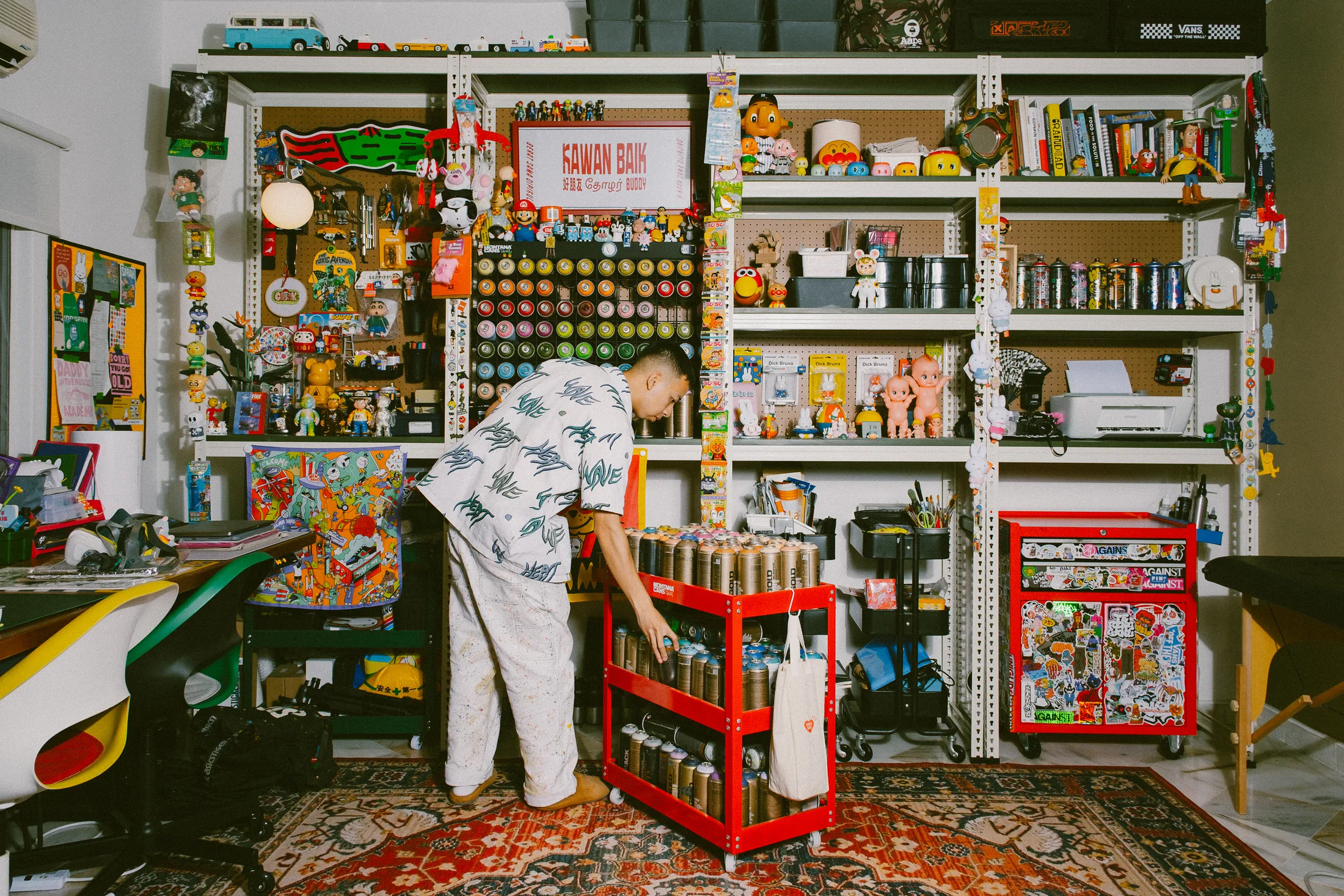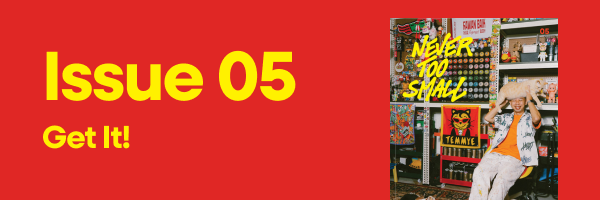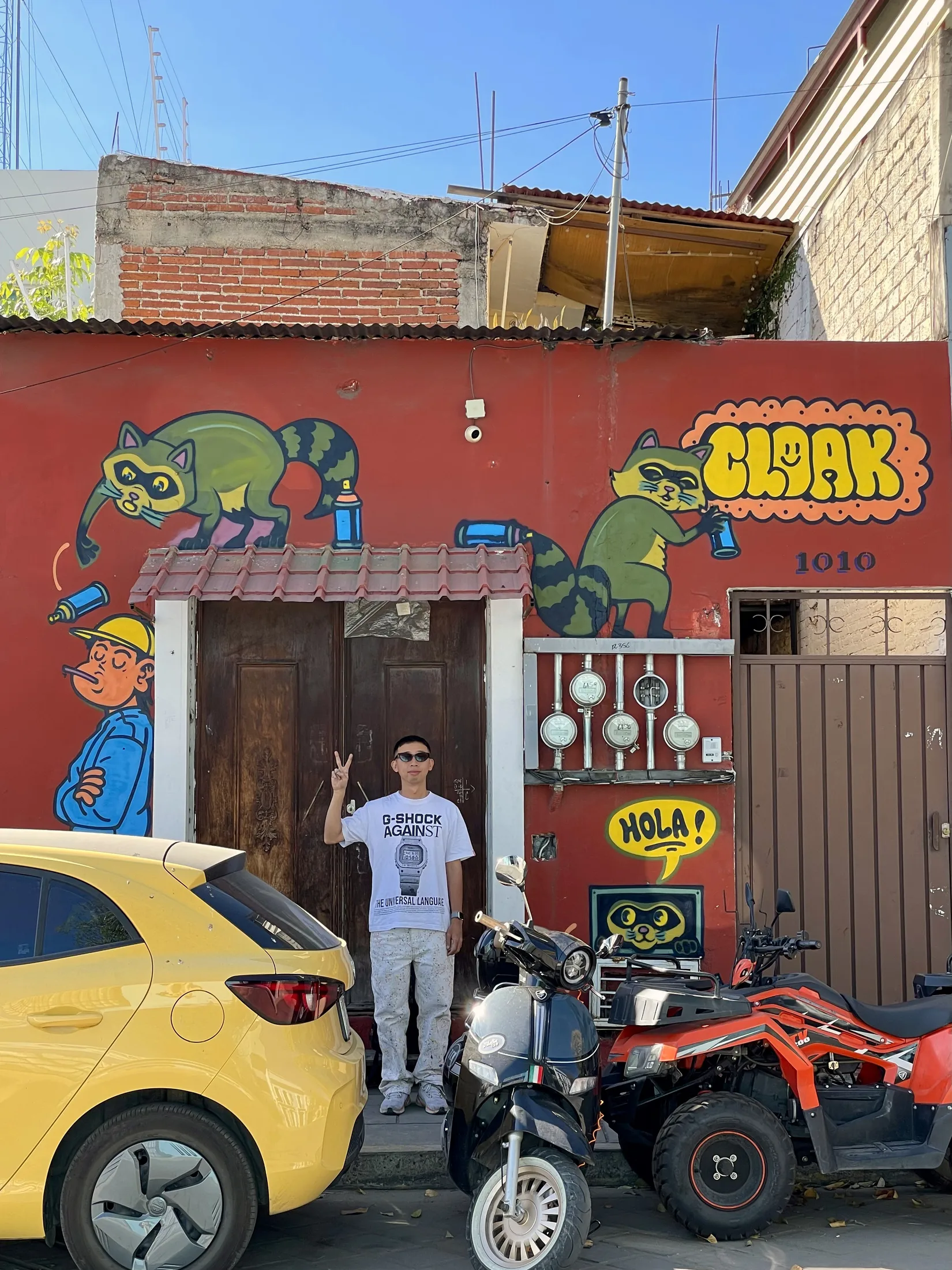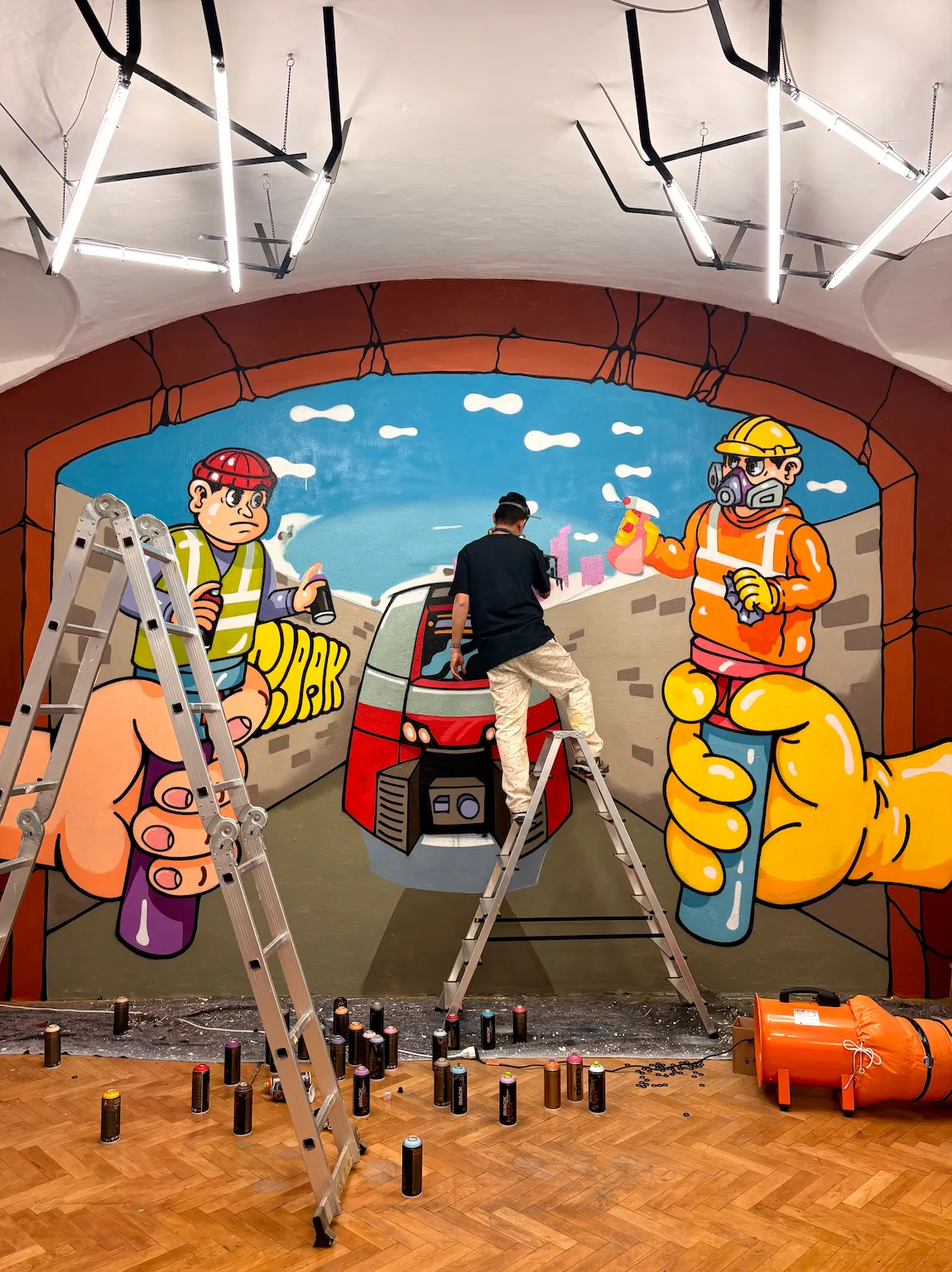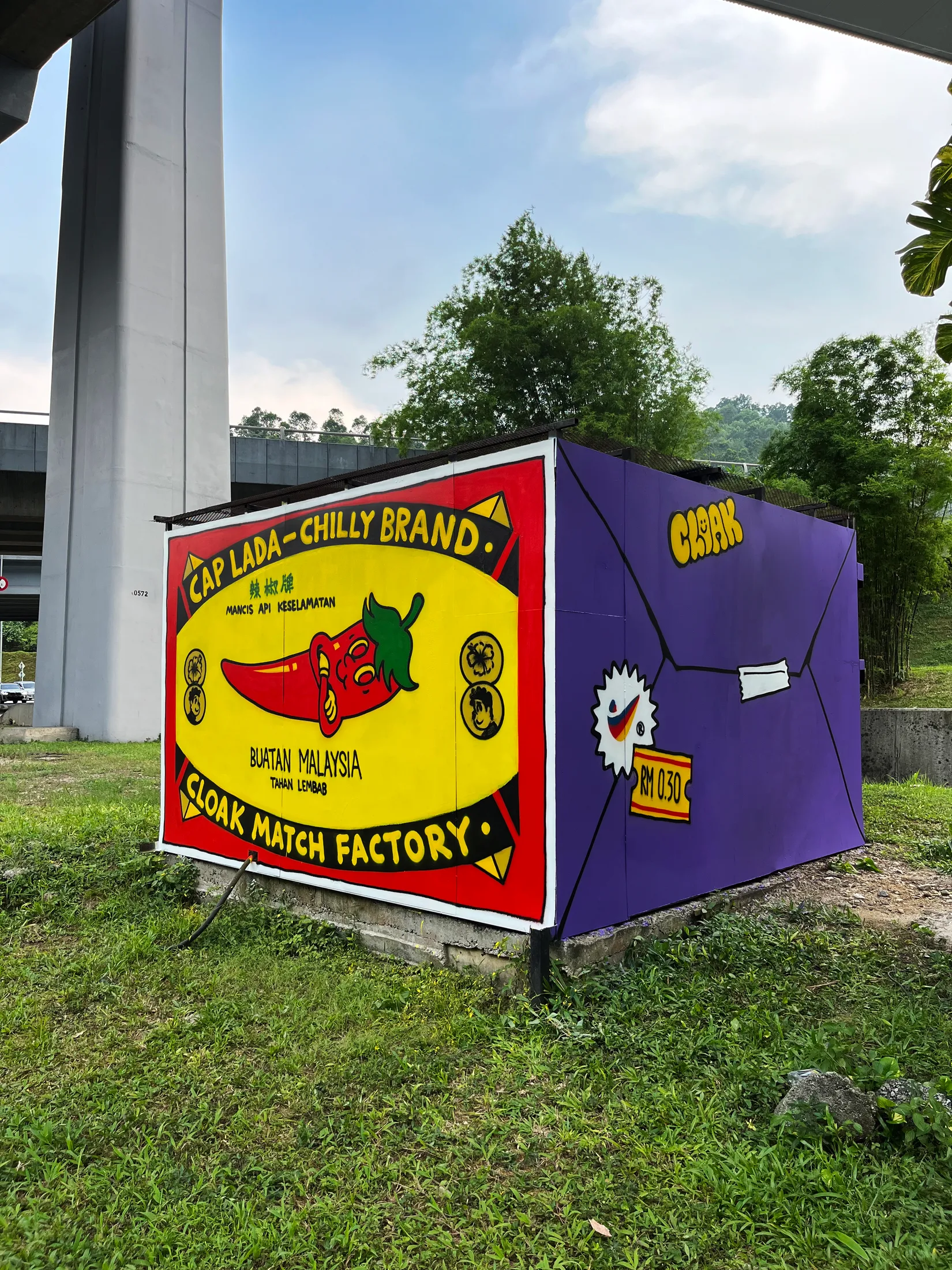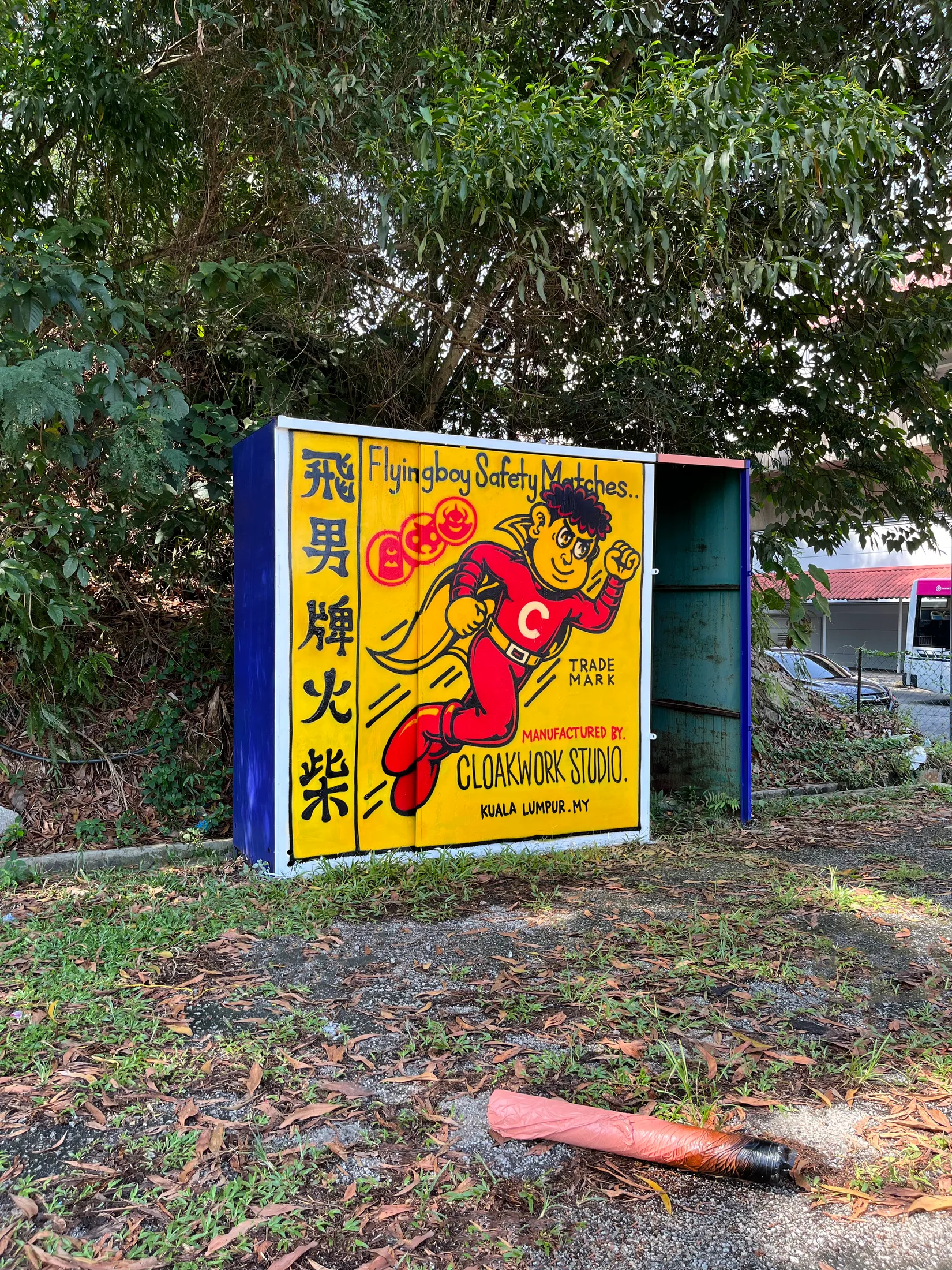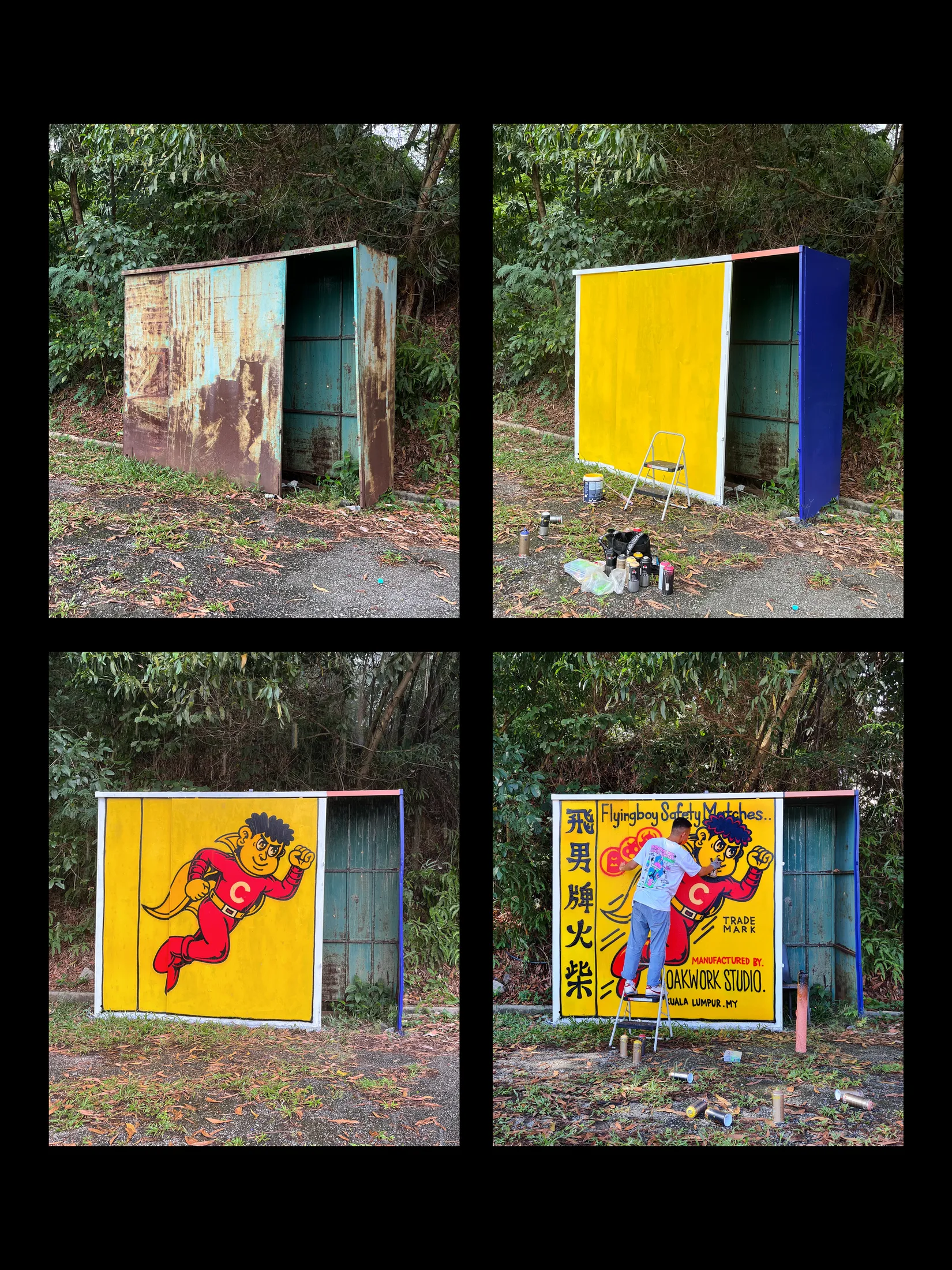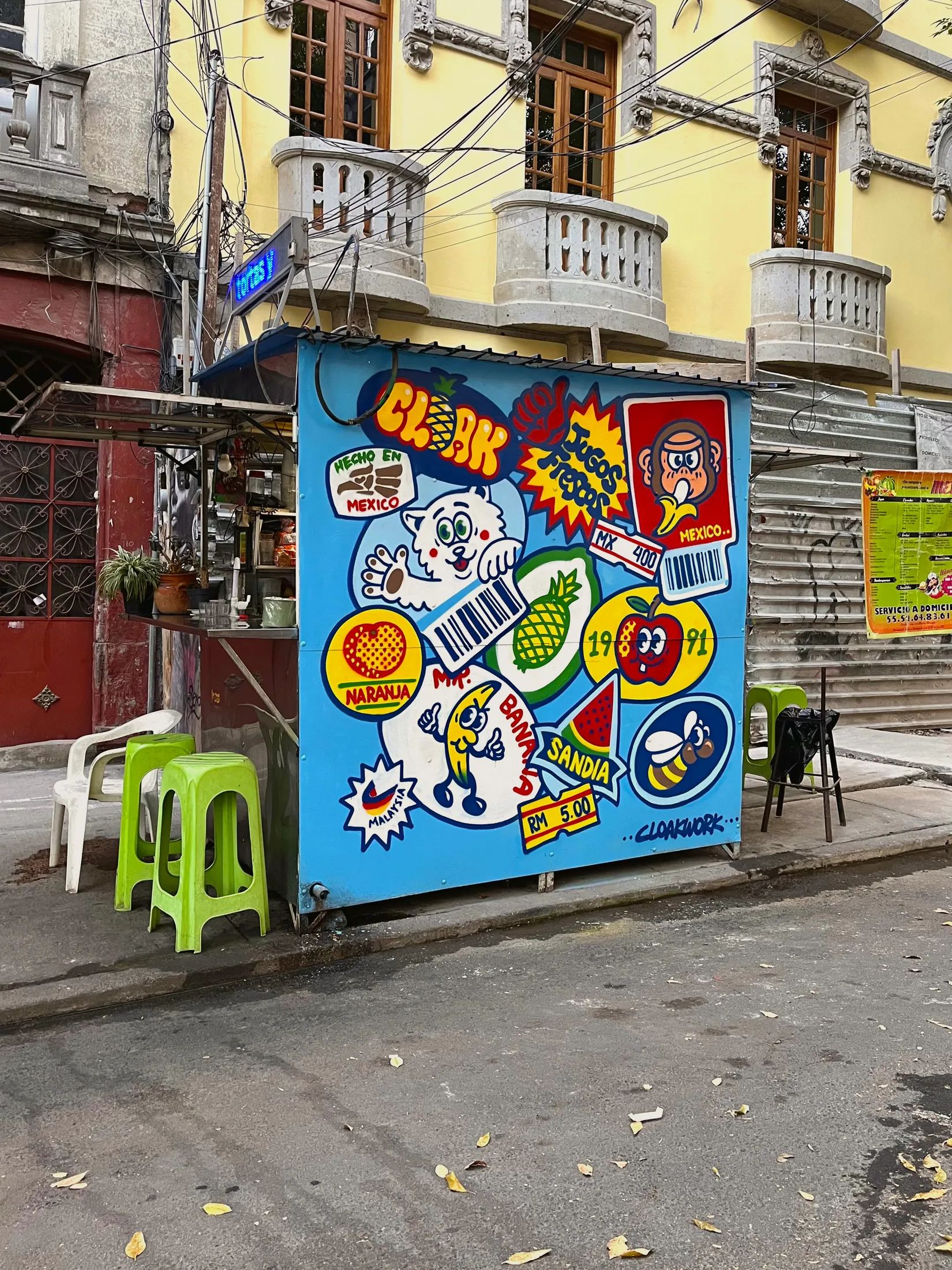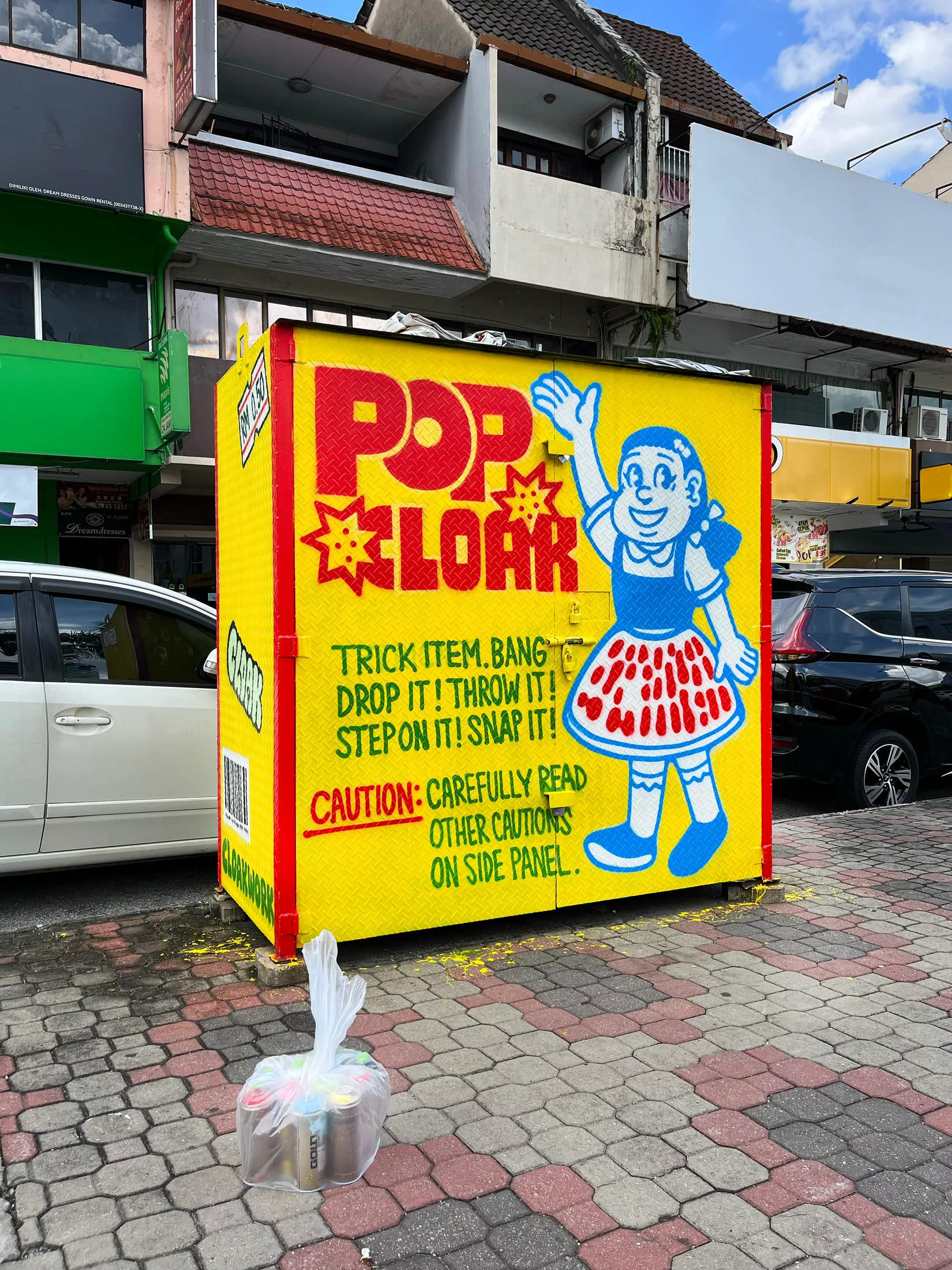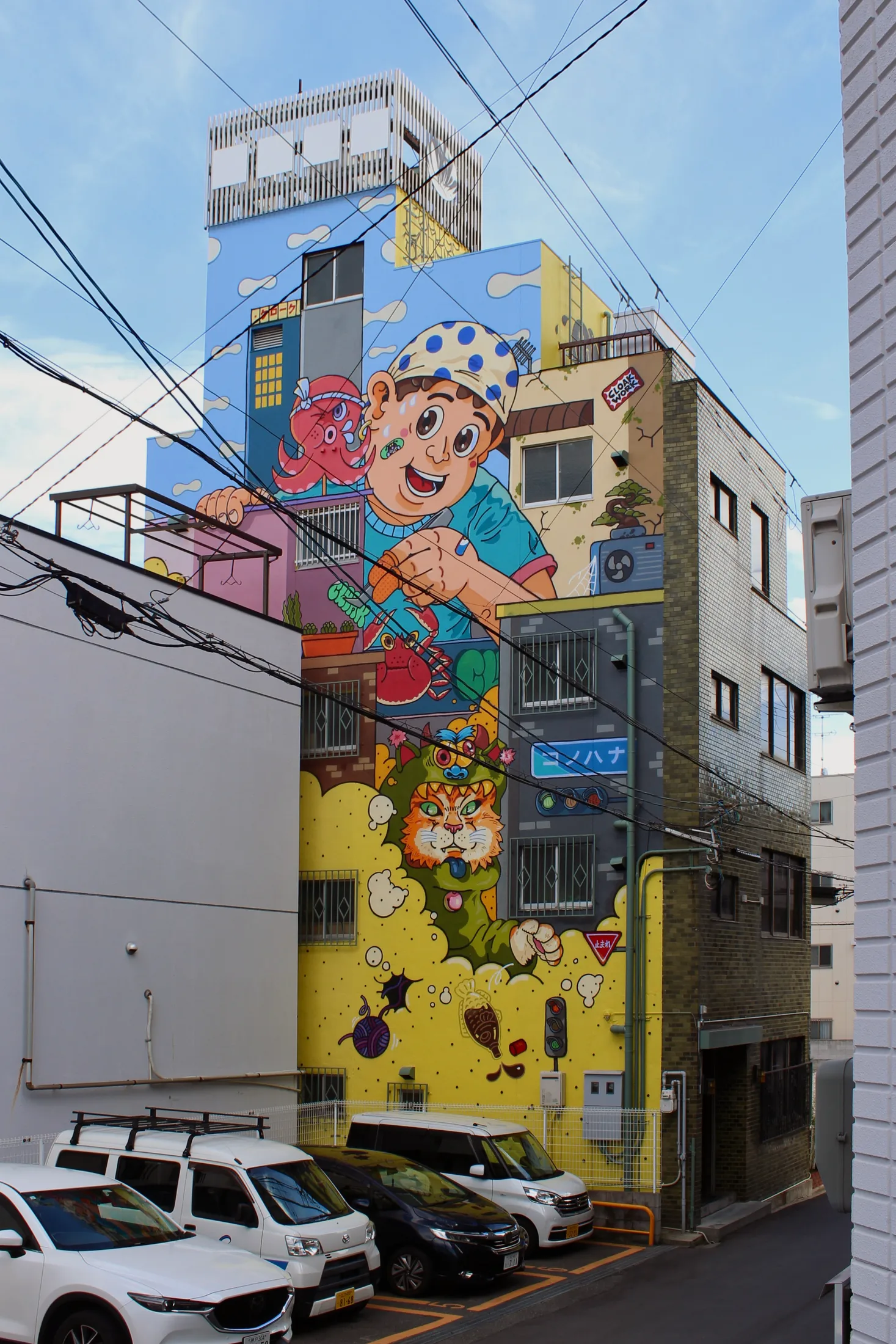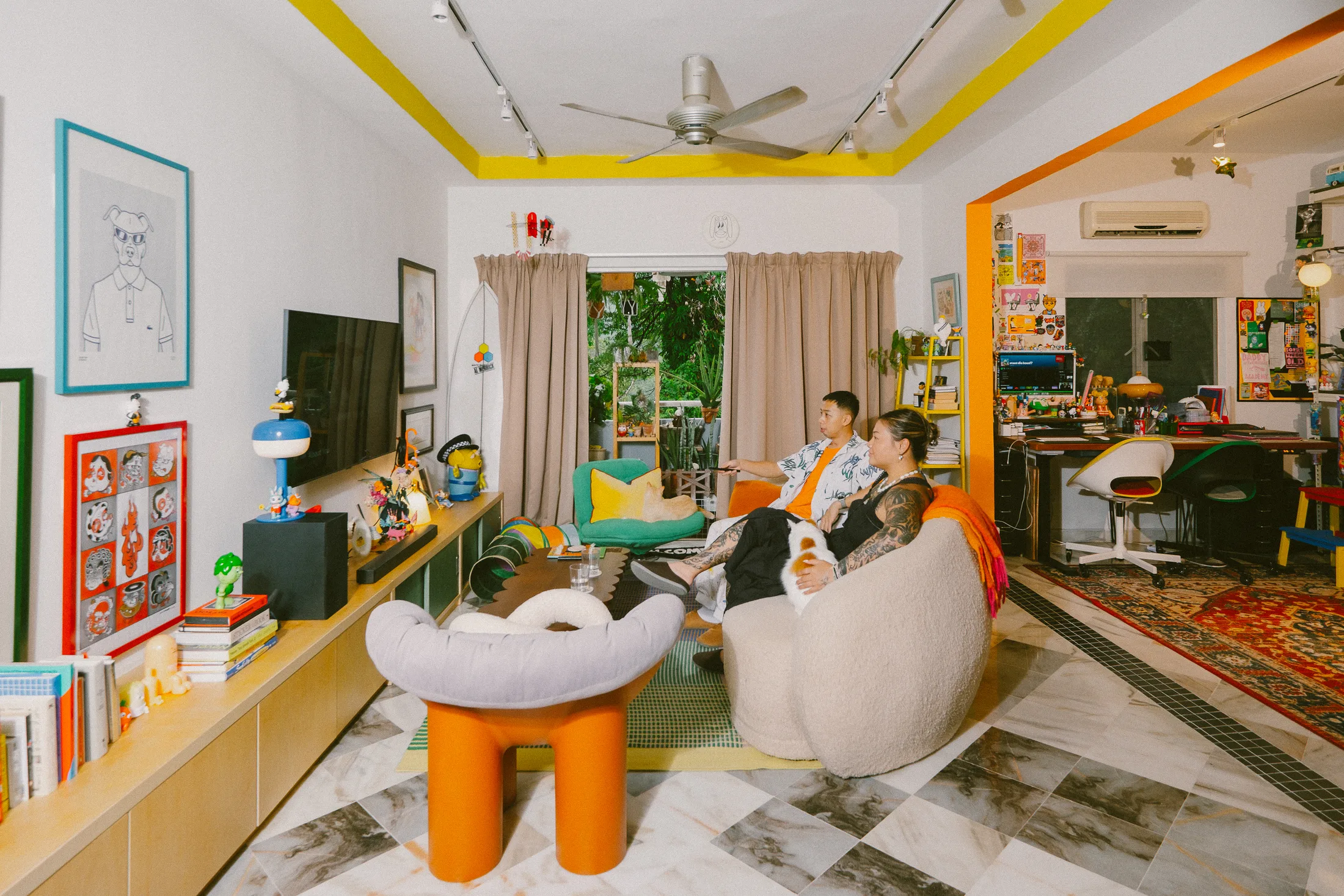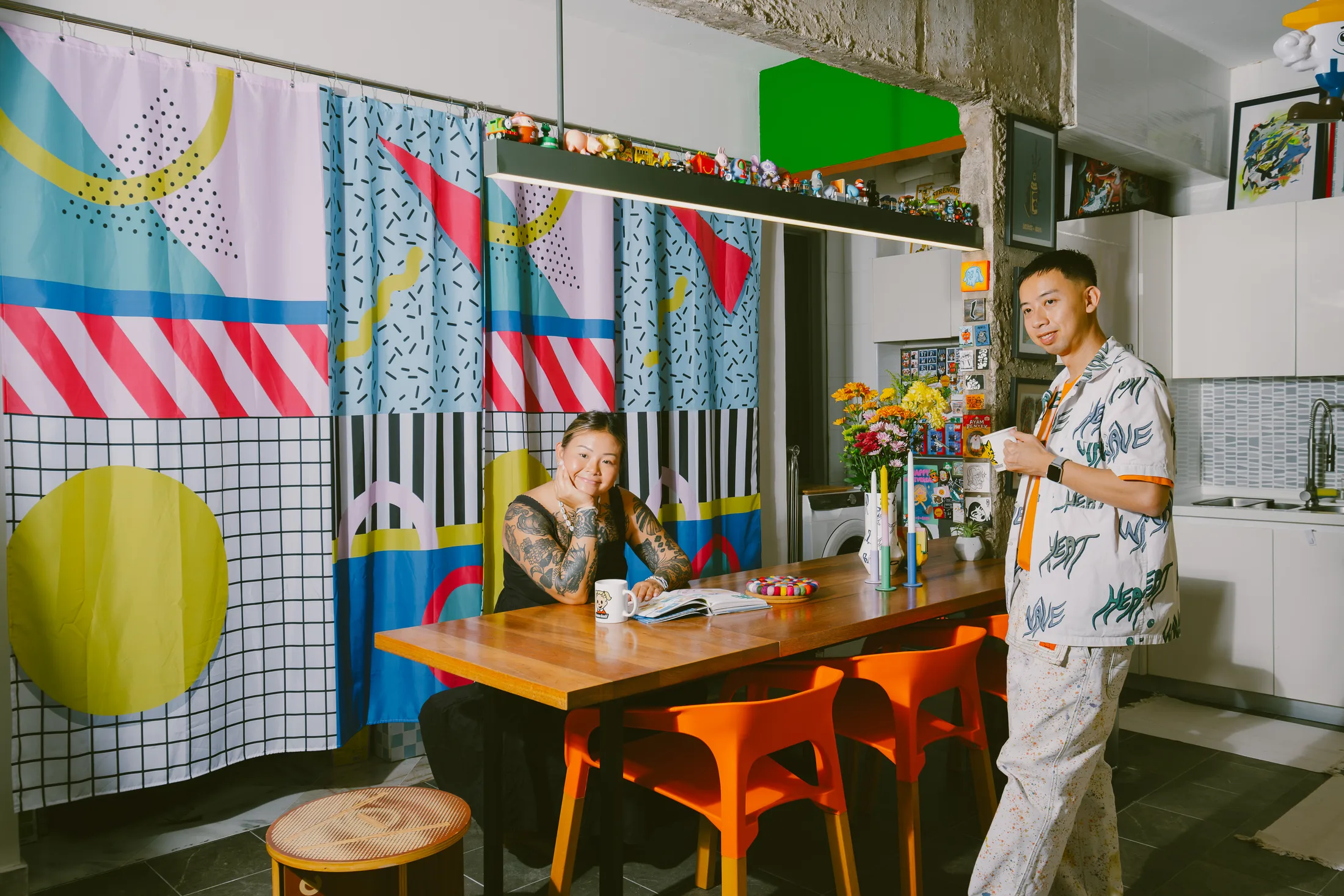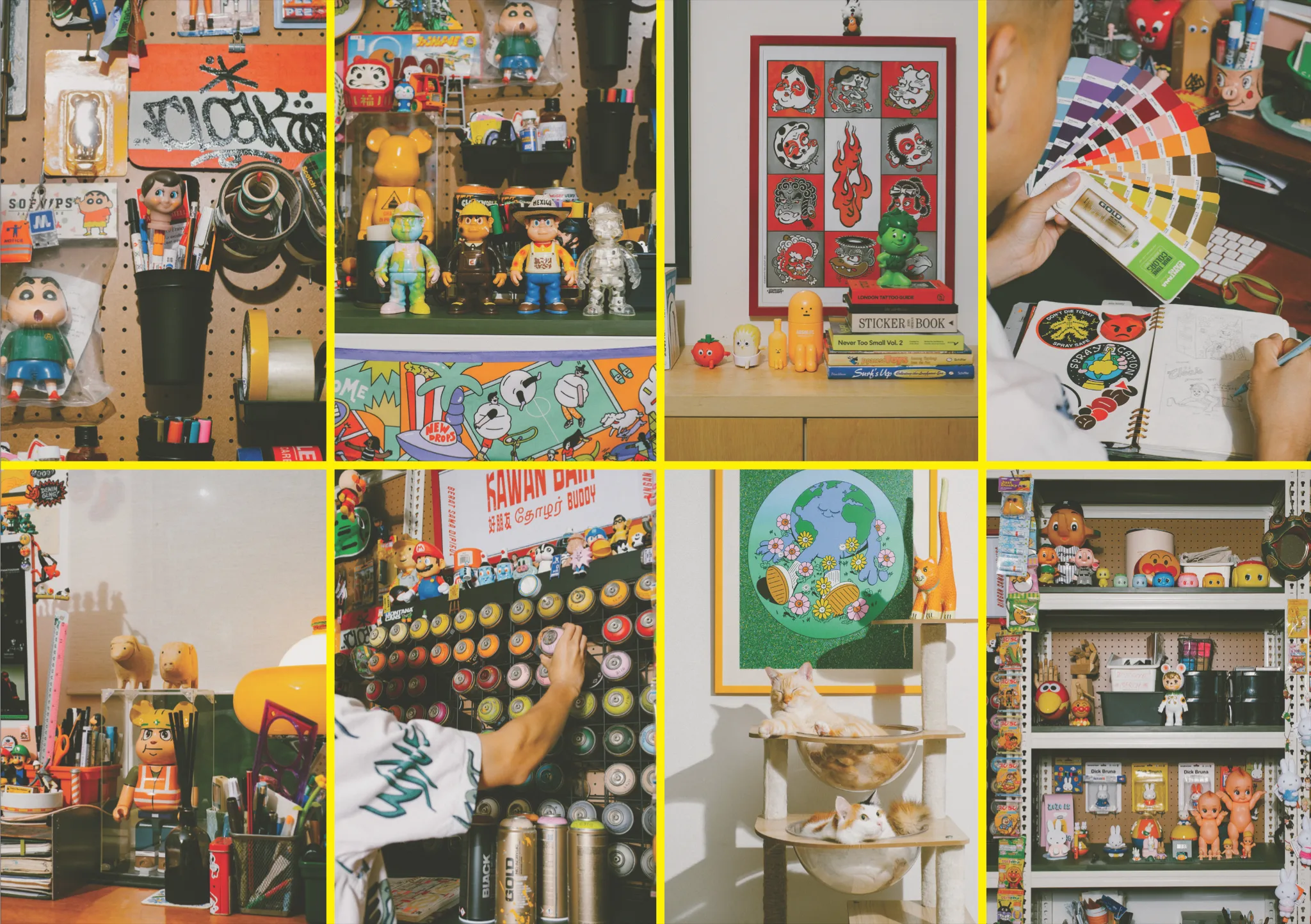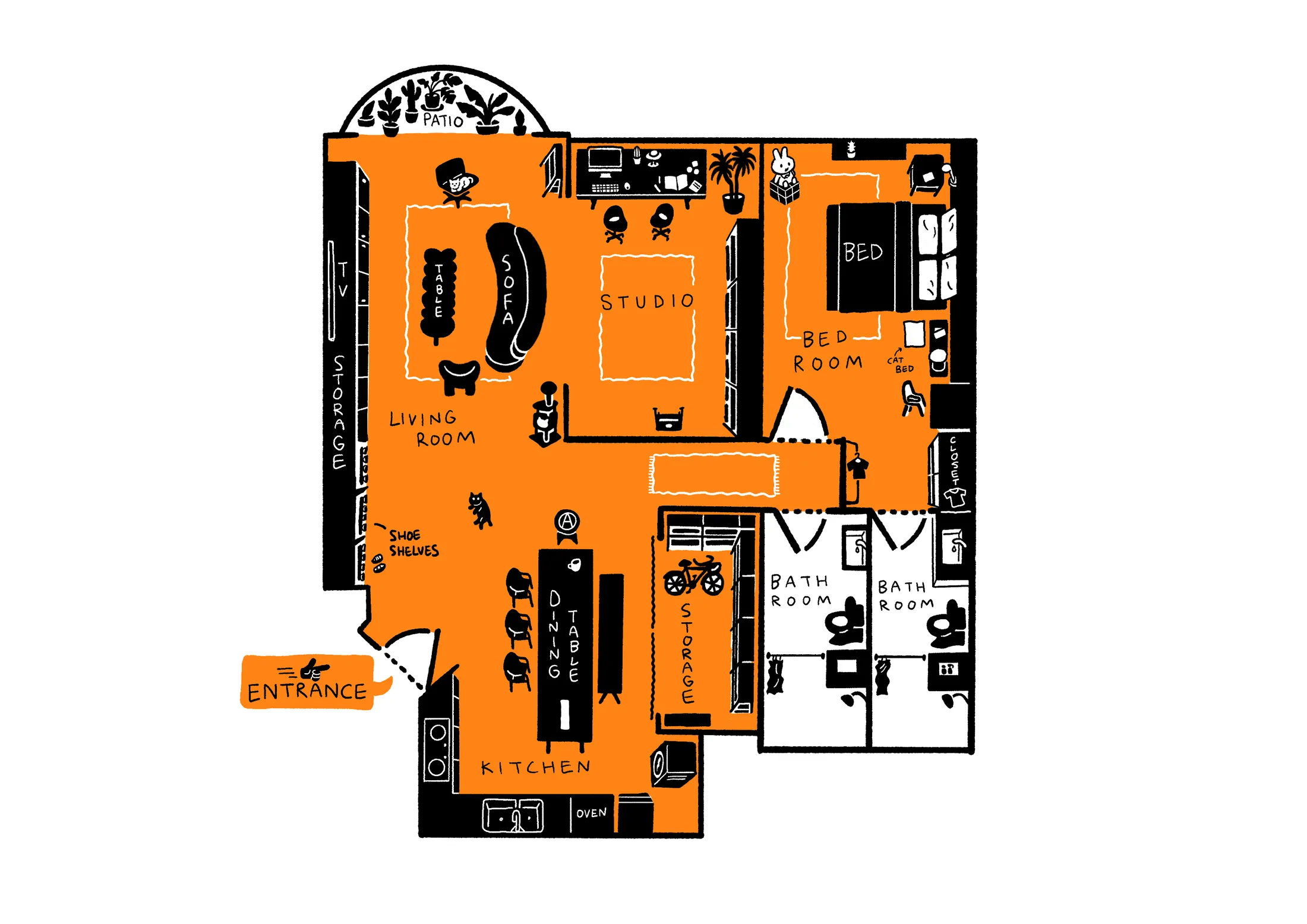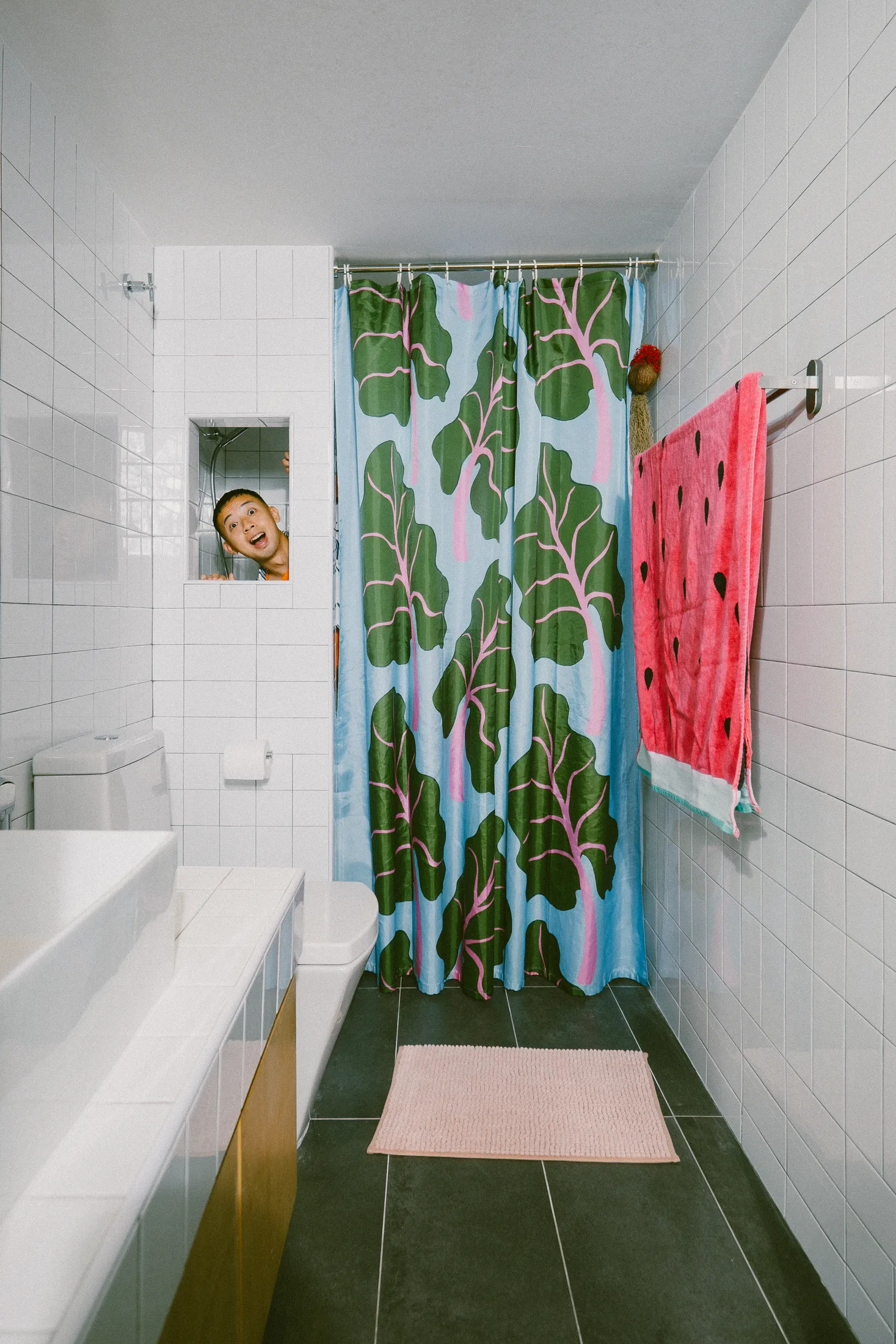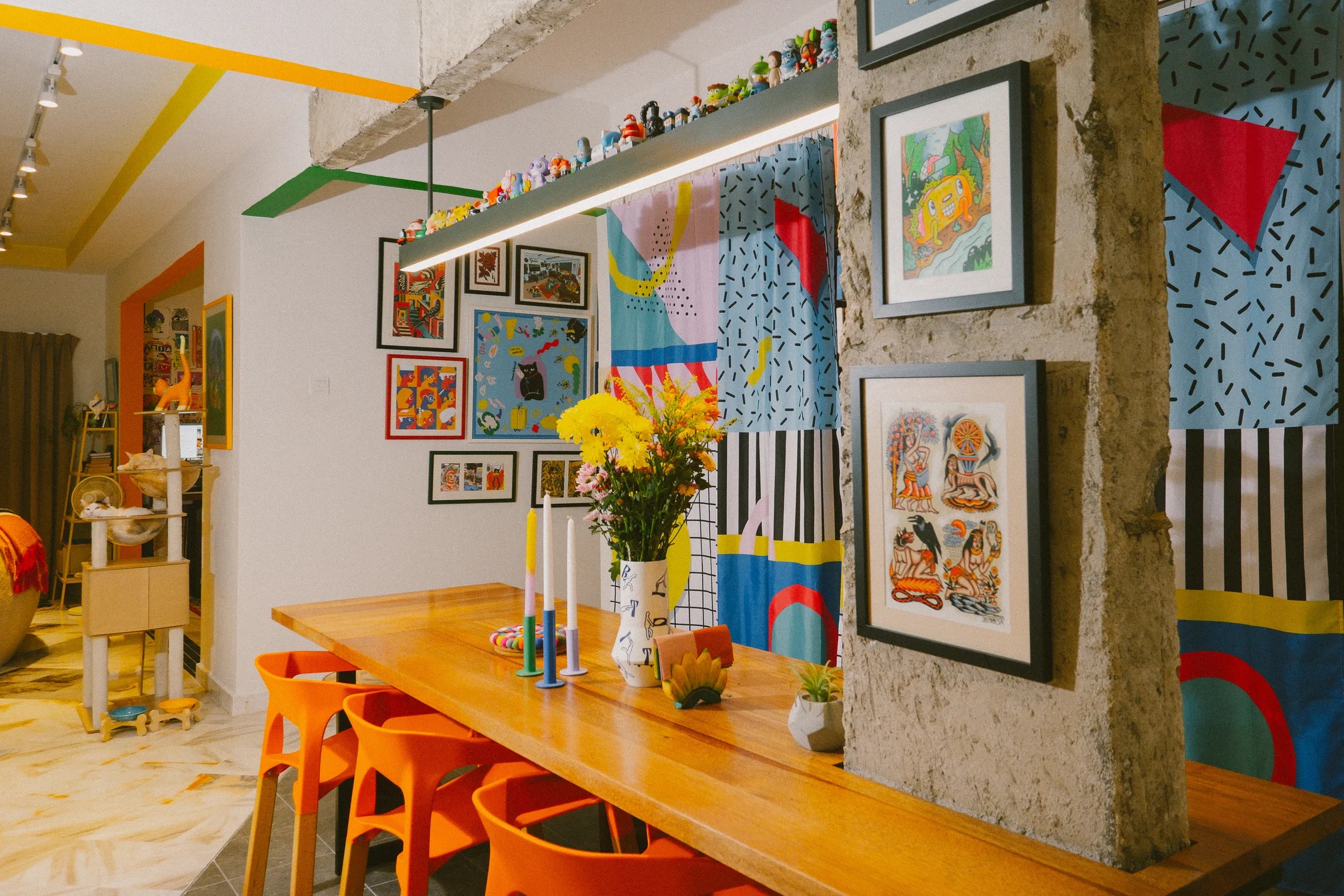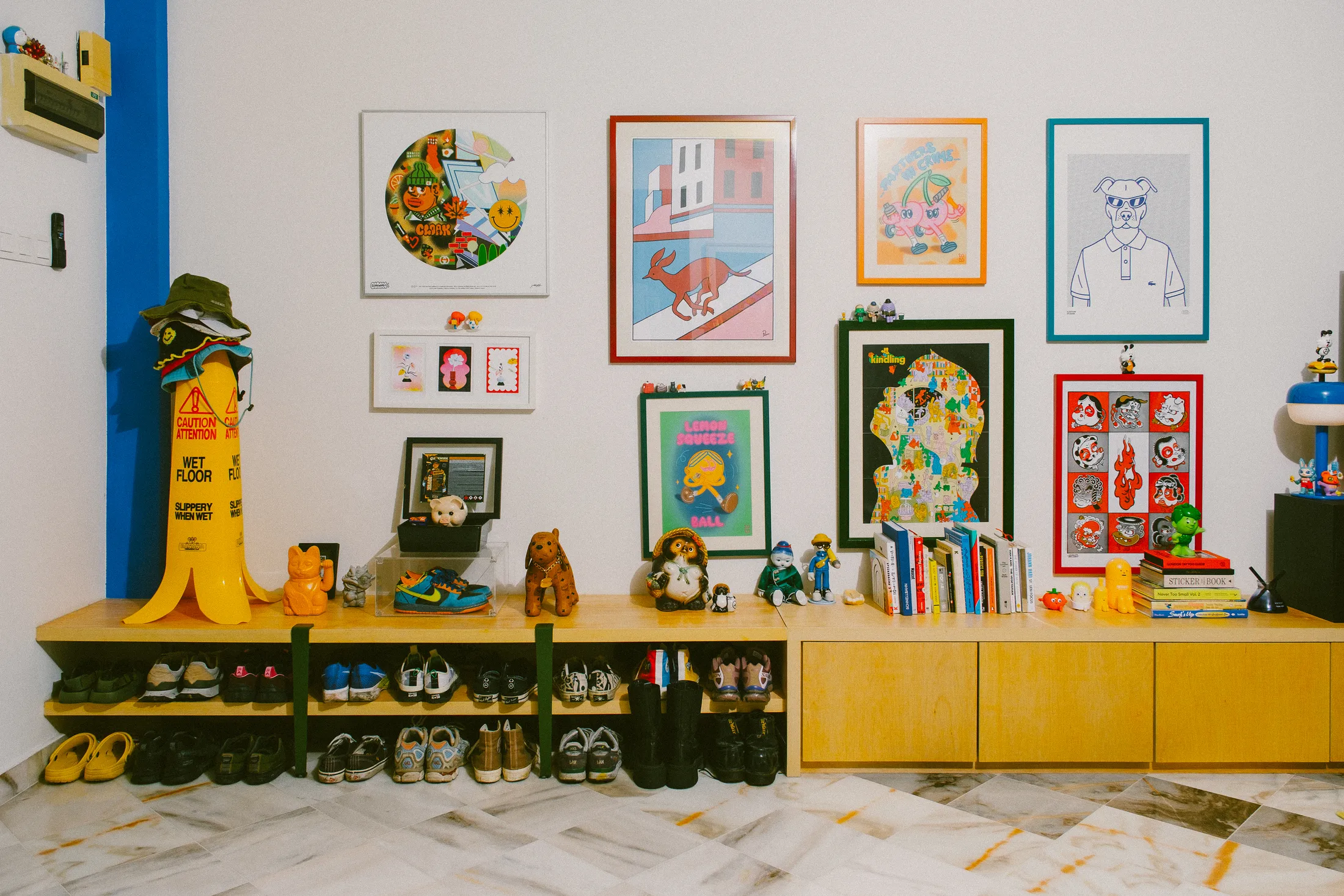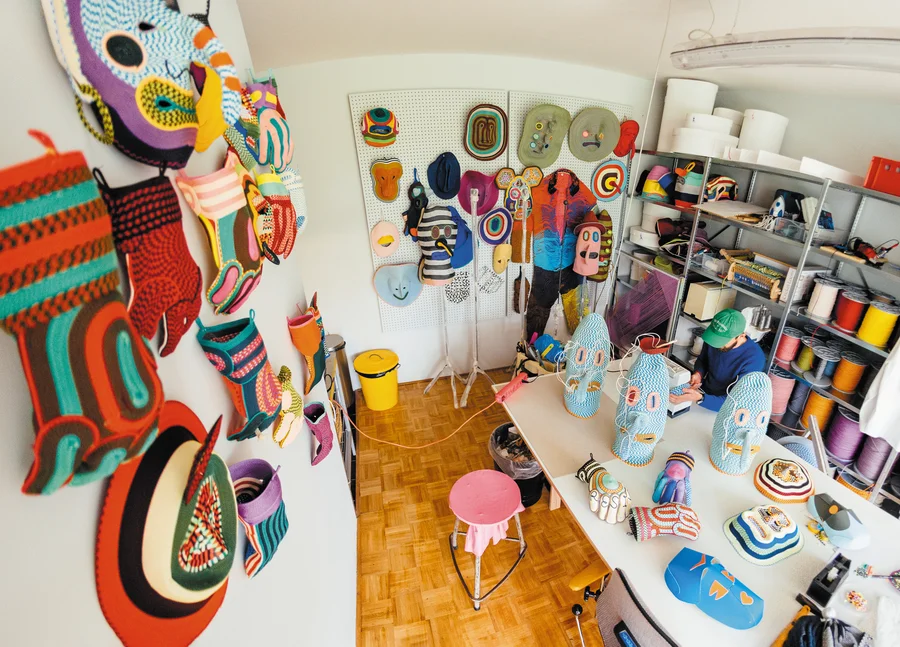Chern’s work is instantly recognisable: playful, character-driven, and steeped in a distinctly Malaysian sense of humour. From a disused shed transformed into a giant vintage safety matchbox to a nostalgic rendering of an old-school kopitiam-style cafe to a cheeky parody of everyday brands and icons, his art channels the textures and quirks of local life. He blends graffiti with graphic design and storytelling, inserting cartoon-like characters into surreal, scene-setting environments. But his murals do more than brighten walls, they tell stories that resonate with passersby, drawing on childhood memories, pop culture and the rhythms of urban Malaysia. There’s an unmistakable affection in his work – for nasi lemak packets, tin toy boxes, old-school logos – that evokes the warmth and wit of shared cultural memory.
Born and raised in KL, Chern grew up in a city that always felt like it was in motion. “It makes me restless too,” he laughs. “It pushes me to create.” As a student commuting daily by train, he passed graffiti-covered riverbanks that doubled as jam spaces for artists from around the world. “There were new masterpieces every day. I was fascinated.” His entry into graffiti was instinctive: more drawn to images than words, he pursued a degree in illustration and painted his first tag, “Chern,” on a grey wall in KL using unsold spray cans from his father’s hardware shop.
Like many emerging graffiti artists, his early work didn’t always last, often painted over within days. At first, this stung. “I’d get demotivated when a piece got covered,” he admits. “But I realised the experience mattered more. Every piece taught me something.” His murals today are rooted in that ephemerality, but they also strive to connect. One such story took the form of his Safety Match series: small, site-specific murals styled like vintage matchboxes, inspired by an old shed he passed that reminded him of an open matchbox. “People used to rely on matchboxes before lighters,” he says. “It’s something almost forgotten, but still deeply familiar.”


